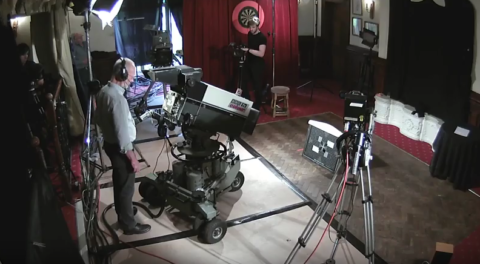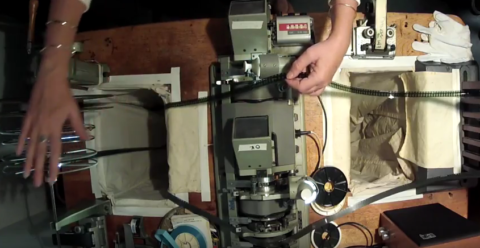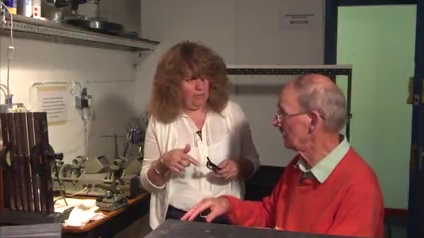
Photo by Steve Harris, no reproduction without permission
(Here is a press release about the reconstruction of a recording by the OB truck North 3, which was Pebble Mill’s original CM1)
“NORTH 3” TEAM TO TAKE TELEVISION BACK IN TIME
A team of television historians will travel back in time as they bring a vintage BBC outside broadcast truck back to life in North Wales.
Working with Flintshire-based broadcasting history enthusiast Steve Harris, the team from Royal Holloway University of London will reunite veteran cameramen, directors and engineers with North 3, a restored colour mobile control room.
North 3 travelled the length and breadth of the country during the 1970s, relaying live footage of Royal Ascot, The Open from St Andrews and the Royal Variety Performance from the London Palladium.
It ended its life with the BBC in the early 1980s, and spent several decades decaying at an airfield in Devon, before being rescued and restored by Hawarden-based television historian Steve Harris.
Now researchers from Royal Holloway are about to embark on a hugely ambitious “hands on” history event during which a full outside broadcast crew will be re-united with the restored vehicle to recreate a 1970s sports television production.
The experiment, which will take place next week (May 17, 18, 19) will be the first time that anyone has attempted to see the restored North 3 operational and staffed by its original crew. The vehicle, an analogue ancestor of today’s digital satellite outside broadcast trucks, is the only survivor of its type in working order.
Working with Steve Harris, the team from Royal Holloway have located a full team of former outside broadcast camera operators and engineers. For first time in several decades, they will be reunited with North 3 and re-live the experiences of their earlier careers.
Using restored 1970s television technology, the team will record a darts match and conduct interviews with former television production personnel. The exercise will help the Royal Holloway team, led by Prof John Ellis of the college’s Media Arts department, to learn more about how television was made in the 1970s and 1980s.
Prof Ellis said: “Television has seen vast technological changes since the 1960s, and some of the greatest changes have taken place in outside broadcasts. Our work with North 3 will help to document technologies and ways of working from the heroic age of television, which are now at risk of being forgotten.”
Digital producer Amanda Murphy, who is organising and directing the event, said: “When we met with Steve Harris last November and decided to take on the challenge of getting North 3 operational with as full a crew as possible, neither of us could have quite imagined quite the enormity of the task. The phone rings daily with old technicians asking: ‘Are we serious? Are we mad?’”
The complexity of the event means that it will not be open to the public, but footage and interviews from the event will be uploaded to YouTube during the week.
Prof John Ellis
Here is the link to a blog about the project, from producer Amanda Murphy: http://www.adapttvhistory.org.uk/north-3-outside-broadcast/
The following comment was left on the Pebble Mill Facebook page:
Nigel Sizer: ‘One interesting fact about OB trucks of this vintage is that many carried a steel tray about 4ft square on runners at the rear. Once parked up, the tray was slid out and put underneath the engine..to catch any oil drips! …’
Malcolm Elliott: ‘It would be nice to get my hands on a PC80 again after so many years… sadly am the other side of the world so would need a very long panning handle! Good luck with the event and would be interested to see who’s on the camera crew.’





